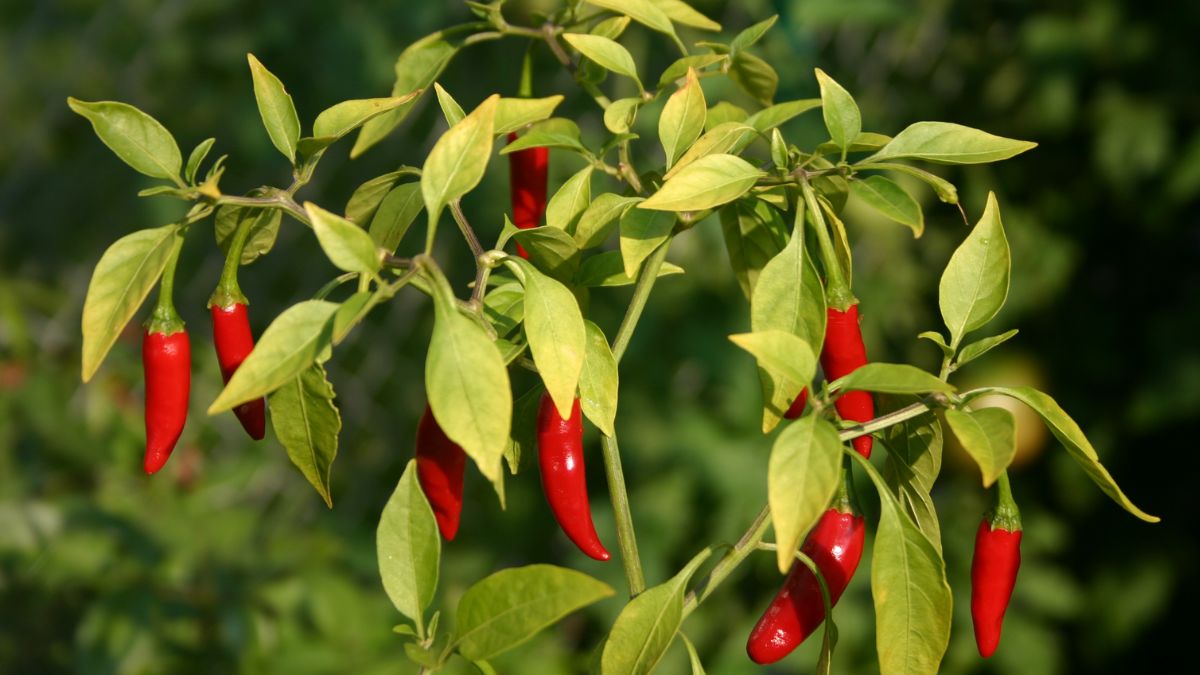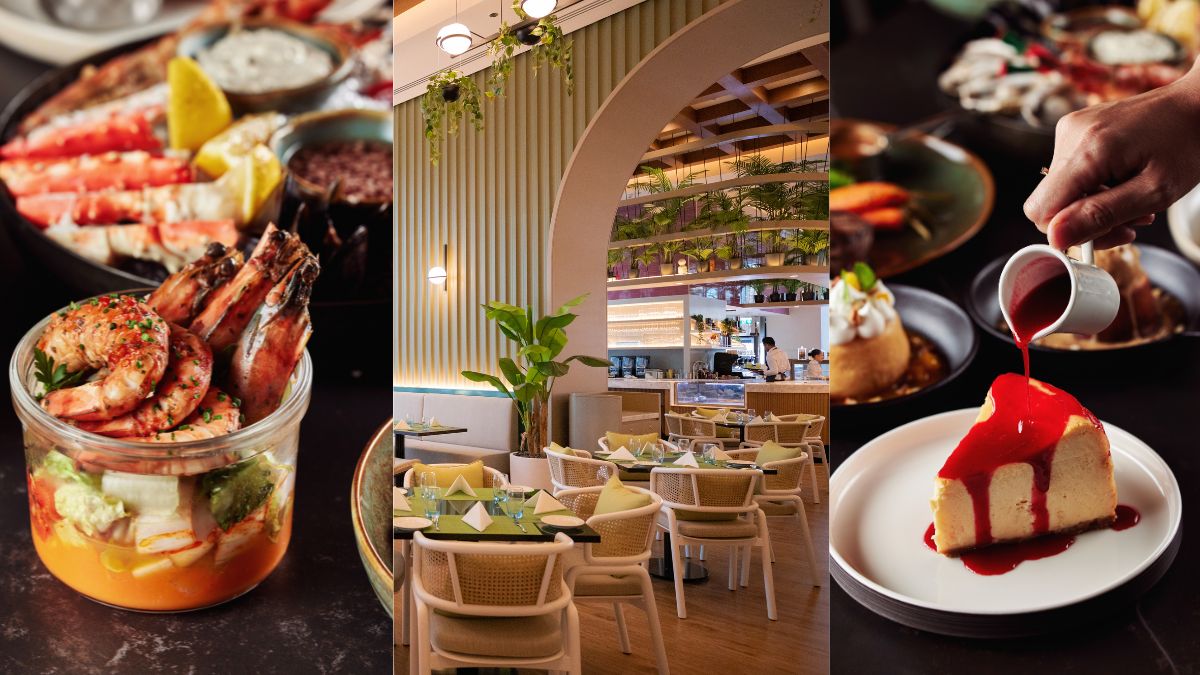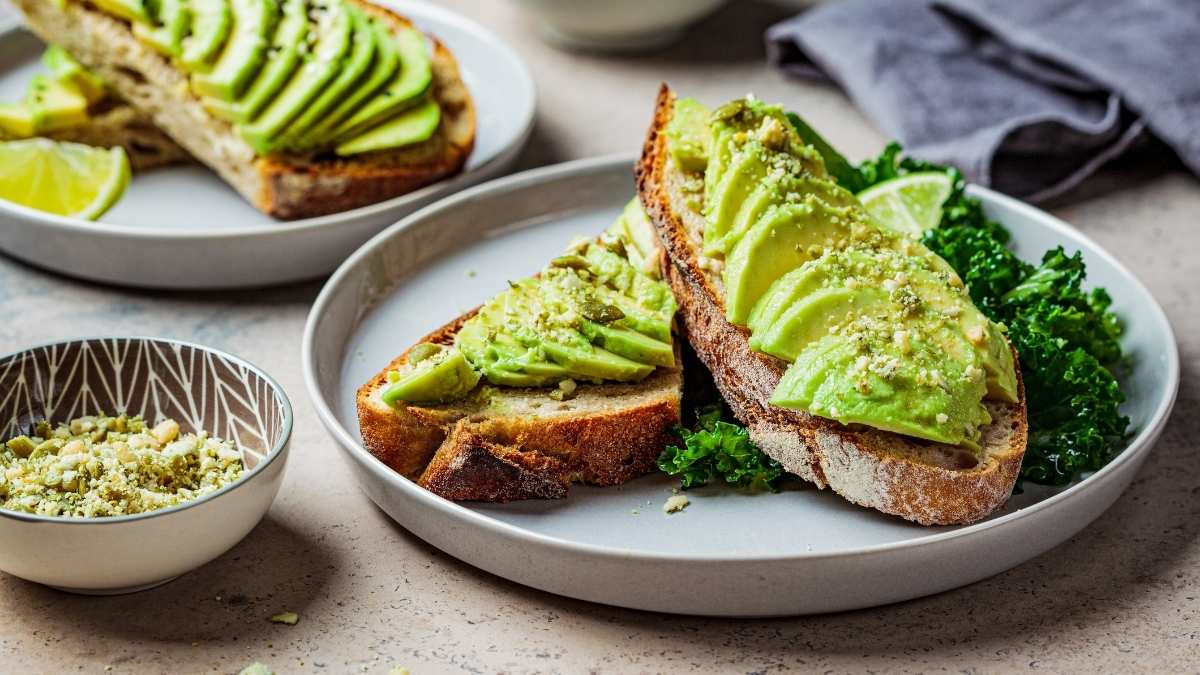Bhoot, Guntar, Teja, Sannam – these are not the names of fictional or movie/TV characters only. These are also Mirchiiiiiiiis aka red hot chilli peppers! Can’t do with it or without it! These are a few types of chillies and there are more unique ones too that grow exclusively only in India.
Did you know India is the largest producer of chillies in the world? It indeed is! It has a large market share of about 37% globally. Not only the largest producer, but unsurprisingly, India is also the largest consumer of chillis. It is one of the most common spices found in Indian kitchens and cooking!
India is diverse (yes, I know, you have heard that a gazillion times but it’s a fact), and the varied terrain, soil, and climate of regions give birth to various kinds of chillis. In fact, it is safe to say almost every Indian state and Union Territory can boast of some kind of chilli native to that region.
Fresh Chillies Vs Dried Chillies
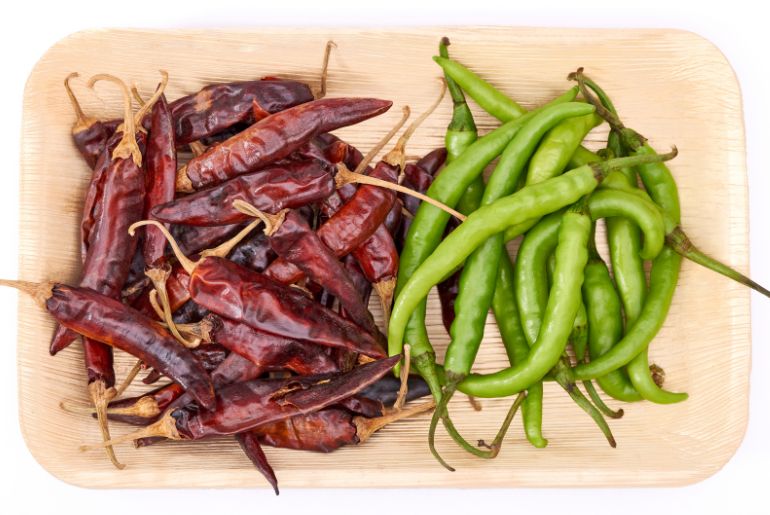
It will take you hours and hours of research to arrive at the conclusion that chillis are divided into two main categories – Fresh and Dried. To reach that conclusion, one has to study how chillies are grown, harvested and how they are even sorted.
Also Read: How To Make Chilli Sauce At Home: 10 Recipes
Fresh chillies have very high amounts of Vitamin C along with multiple health benefits. Dried chillies, often sun-dried in large quantities, lose much of the Vitamin C but have about 100 times more Vitamin A than the fresh variety. Apart from the health benefits, the way the chillies impart their taste and heat differs between fresh and dry varieties.
How Does It Impact The Taste?
Explaining why the chillis taste the way they do, folks at Kaatil told us, “The pungency and heat in chilli is due to the alkaloid “capsaicin” contained in the pericarp and placenta of fruits, ranging from mild to intense spicy/hot when eaten.”
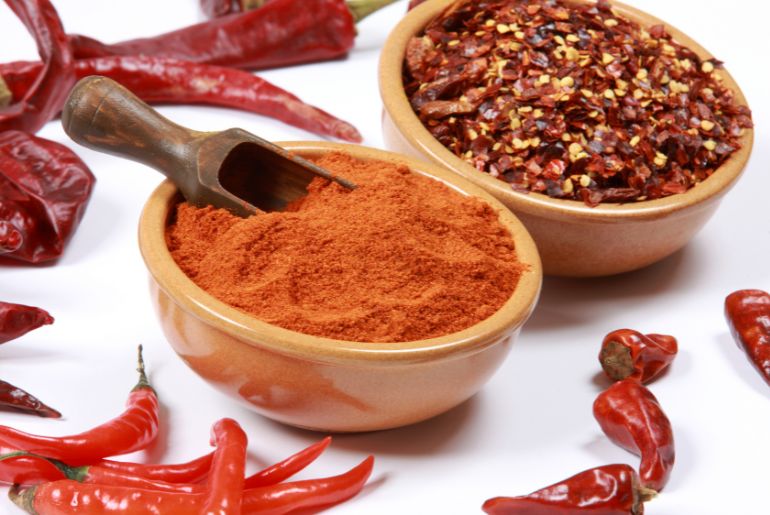
“To keep it simple, fresh chillies bring out a burst of capsaicin on the tongue very quickly, whereas the dried variety usually hit the palette a bit later, mellow out and linger for longer,” the representative adds.
Chillies are grown in different Indian states and have various levels of heat through Capsaicin which is measured with the unit SHU (Scoville Heat Unit) that defines the hotness of a chilli. For example, a Jalapeno is about 5,000 SHU whereas Bhoot Jolokia (Ghost Pepper) is 10,00,000 SHU +.
Common Types Of Chillies And Their Hotness Quotient
Some of the more commonly eaten fresh varieties of chillies are:
1. Green Jwala
Green Jwala is largely grown in Gujarat. As it is not extremely common, it is hard to determine its Scoville Heat Unit (SHU)
2. Teja
Grown in Andhra Pradesh and Telangana, Teja is relatively a hot chilli pepper. Its SHU is anywhere between 50,000 to 70,000. It is used in small quantities as it lends a fiery kick to whatever it is added to.
Also Read: Here’s How To Find The Purity Of Red Chilli Powder With FSSAI Tips
3. Lavangi
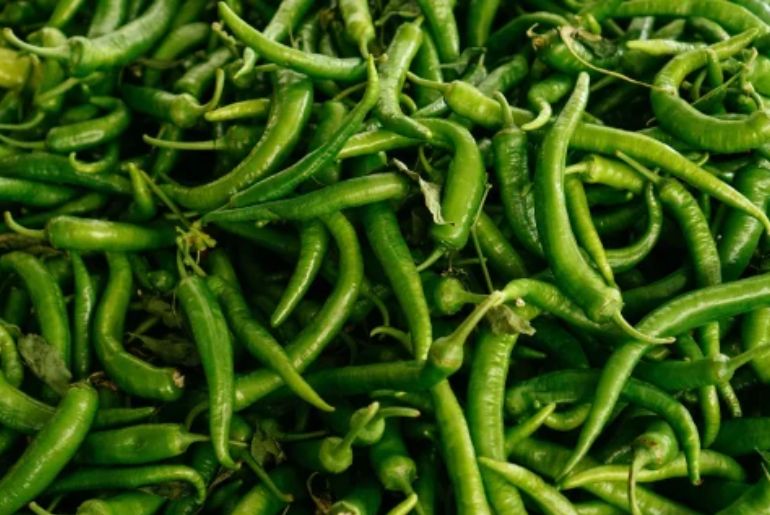
Native to Maharashtra, Lavangi chilli is considered a medium-hot chilli but it has an intense flavour. It even adds a unique aroma to the dishes cooked using this. It has a SHU of about 30,000-50,000.
4. Bhoot Jolokia
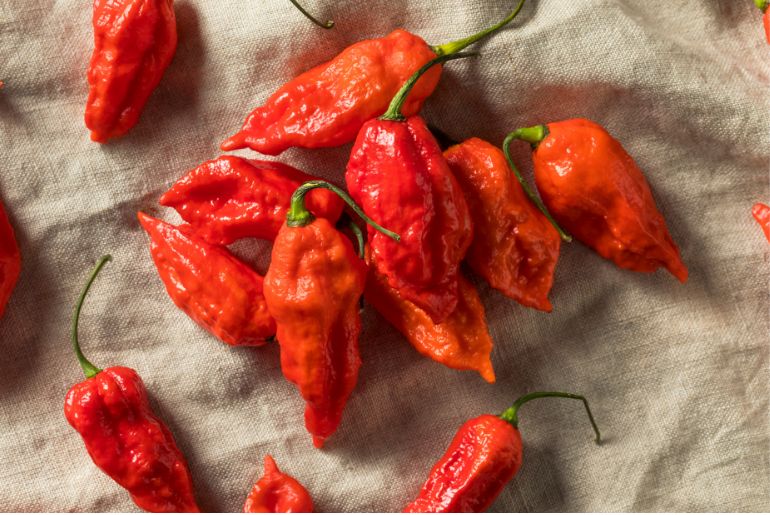
Largely grown in Assam, Nagaland and other North-Eastern Indian states, Bhoot Jolokia or Ghost Pepper is one of the hottest chillies in the world. It has intense heat and a strong flavour. The fieriness of this chilli is appreciated around the world. Its SHU is 1,041,427.
Also Read: Man Breaks World Record By Eating 17 Bhut Jolokia Chilli Peppers In One Minute
5. Dhani or Kanthari
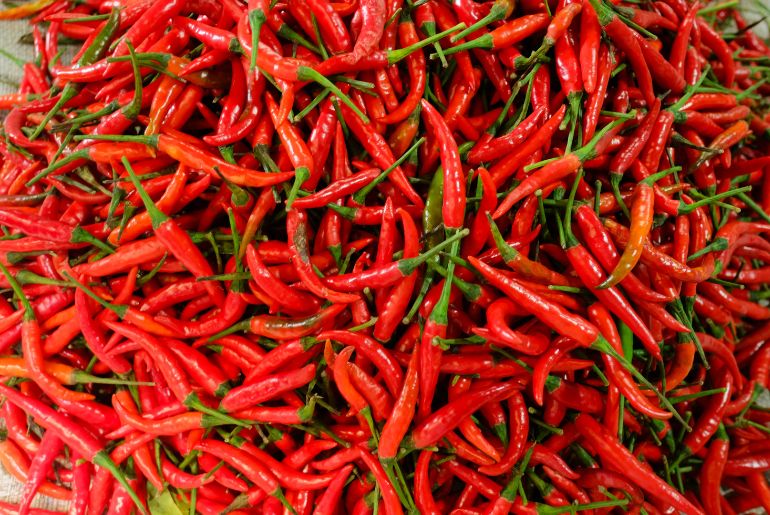
Also known as Birds Eye Red Chilli or Thai Chilli or Bird’s Eye Chilli or Indian Dhani Chilli,it’s commonly grown in India, Thailand, Vietnam, and Indonesia. It has a lot of heat and a SHU of 50,000 to 100,000. And, it’s an essential component in Southeast Asian cuisine.
Native to Kerala, it is also known as Kanthari Mulagu in Malayalam. It is a very hot pepper with 100,000 to 200,000 SHU. It, too, lends a unique taste and aroma to the dishes it is added to. Interestingly, it is known for its medicinal properties and it is used as a home remedy for various health-related issues
6. Bhavnagri
As the name rightly indicates, it is grown largely in Gujarat. The Scoville Heat Unit (SHU) of Bhavnagri chilli pepper is around 30,000-50,000 SHU. A medium-hot chilli pepper, it’s added to sambhar and chutneys.
7. Dalle Khursani

Also known as Dalle chilli it is grown vastly in the Eastern Himalayan region of Nepal, and in some parts of India, particularly in the northeastern state of Sikkim. With 100,000 to 350,000 SHU, it is used in meat curries, momo sauces and more. It is also relished as whole chilli with dal bhaat. Boasting a unique taste and aroma and its bright red colour, it is a popular ingredient in Nepalese and North-Eastern Indian cuisine.
Also Read: Tejasswi Prakash Tries Green Chilli Ice Cream And Here’s How She Reacts | Curly Tales
Some of the commonly used Indian dried chillies are
8. Kashmiri
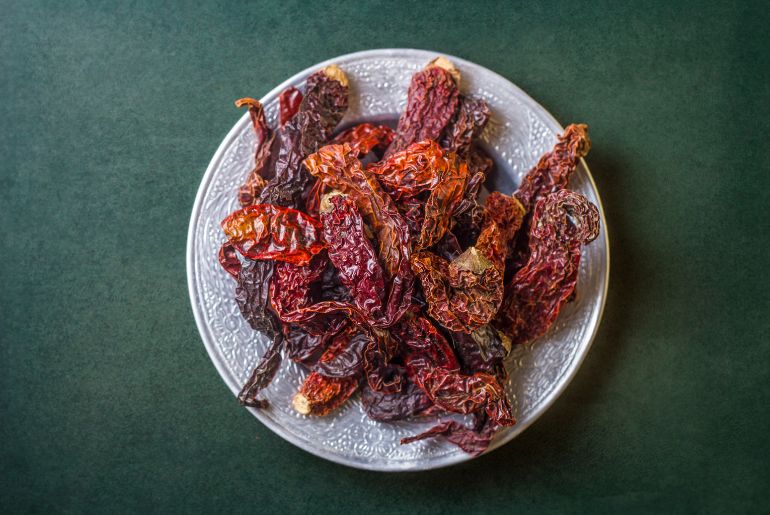
One of the most popular types, Kashmiri chilli is grown in Jammu & Kashmir. This mild chilli offers rich colour to the dishes like curries and biryanis. It is also rich in Vitamin C content. Its SHU is 1,000 to 2,500.
Also Read: NASA Grows Spicy Chilli Peppers For The First Time On International Space Station
9. Guntur
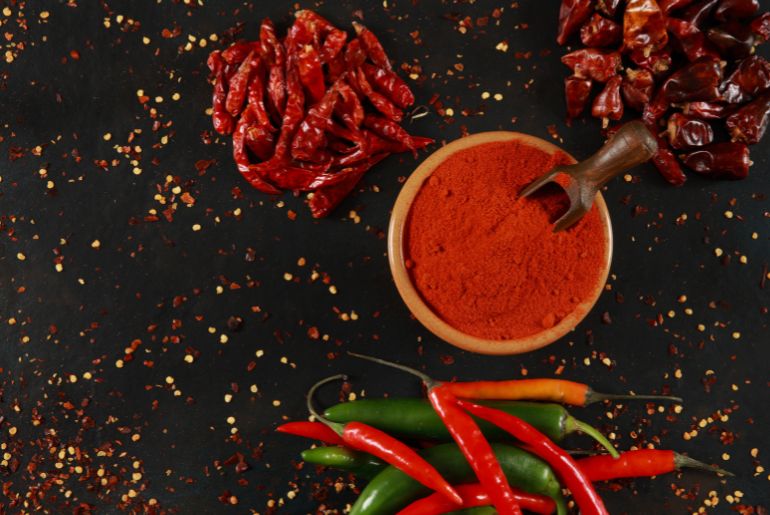
Grown in the Guntur district of Andhra Pradesh, Guntur chilli is a hot chilli pepper and is known for its bright red colour and high pungency. It has intense heat and a strong flavour, and because of this, it is also exported largely. Its SHU is around 50,000 to 85,000.
10. Byadgi
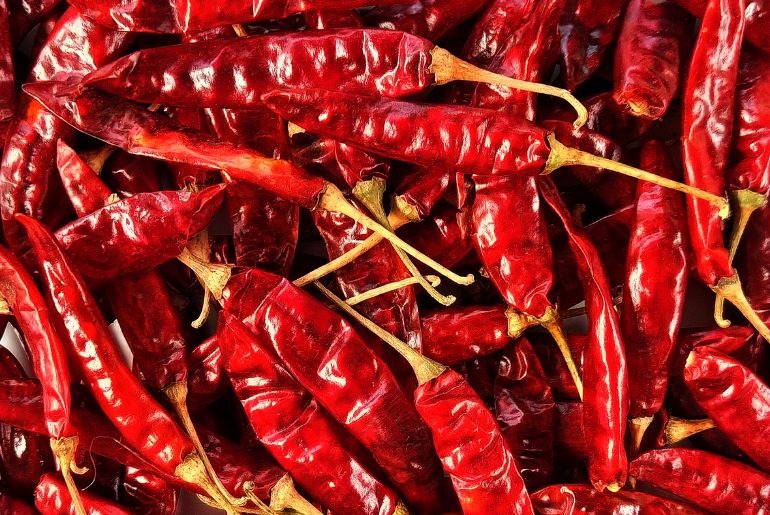
Native to Karnataka, this medium-hot chilli lends mild, moderate heat but a very rich red colour to the dishes. This is the most commonly used chilli in the production of red chilli powder. It is also very common in South Indian dishes and adds the zing and colour to curries, sambhar and chutneys. It has a sweet and smoky flavour. With a SHU of 30,000 – 50,000, it is widely exported, too.
11. Mundu

Boasting of unique flavour, Mundu chilli (Ramnad Mundu Chilli) is small, round in shape and quite mild. It is grown largely in Tamil Nadu and Andhra region. Ramnad Mundu chilli pepper has SHU between 30,000 to 50,000. It is used in sambhars, curries and rasam.
Also Read: 7 Spices Zanzibar Is Known For
12. Boriya
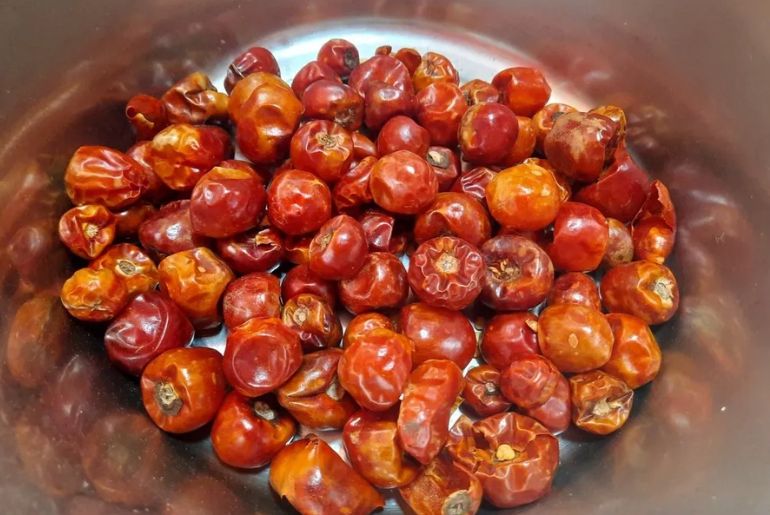
Boria or Boriya mirch is grown in Tamil Nadu and Andhra Pradesh. They are unique and round in shape. These deep, red-coloured chillis are considered medium-hot and added in dals, kadhis, and curries. Its SHU is 800,000-1,000,000.
13. Sankeshwari

Native to the Konkan belt, Sankeshwari chilli is mainly grown in Maharashtra. The name Sankeshwari comes from the Sankeshwar temple that’s nearby. It is highly used in Kolhapuri cuisine. The SHU of this chilli is conflicted and not quite known. But it is considered quite hot.
14. Mathania
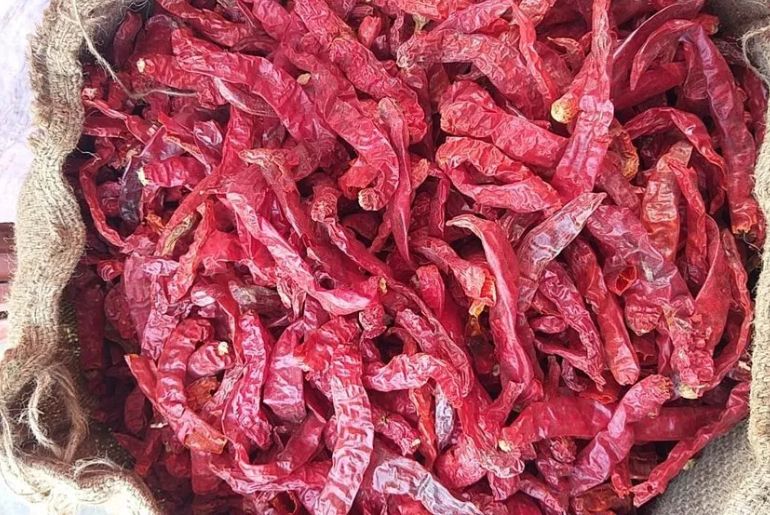
Mathania is grown in Rajasthan and is a relatively hot red chilli pepper. With a heat level of 50,000 to 70,000 SHU, it shares the levels with jalapeño pepper. It’s commonly used in Rajasthani cuisine in curries, soups and pickles. It is quite popular in other countries where it is exported to. It has a unique taste, aroma and bright red colour.
How Much Heat In A Chilli Can You Tolerate?
We spoke to Sagar Merchant, the Founder at Kaatil and he says, “The thing about heat tolerance (in chillies) is the uniqueness about it – Heat or Spicy, is the only flavour you can keep building a tolerance toward and eat more and more of. You may not eat sweeter or saltier increasingly, but you can definitely go higher on spicy and hot. The wonderful and sometimes mind-numbing heat of chillies not only brings forth the thrill but also impart their unique flavours through familiar vehicles of global condiments.”
Also Read: Video Of Coconut Water Omelette From Delhi With Mirchi, Adrak And Namak Is Going Viral
Well, India is home to many more chillies. Thanks to the country’s diverse climate and terrain, a wide variety of chillies can grow in various regions; each equipped with a unique flavour and heat quotient. India’s dominance in chilli production and consumption is a reflection of the country’s love for this versatile and flavourful spice. What do you think? Mohabbat hai mirchi, Sannam?
Cover Image Courtesy: Wikimedia/Daniel Risacher
First Published: January 31, 2023 3:04 PM
